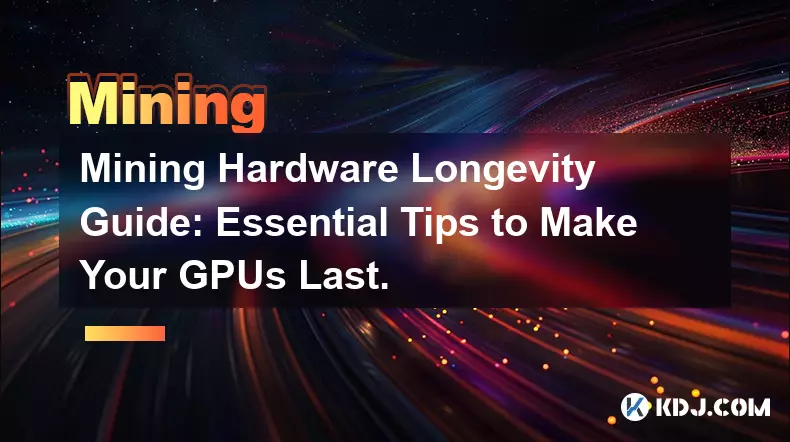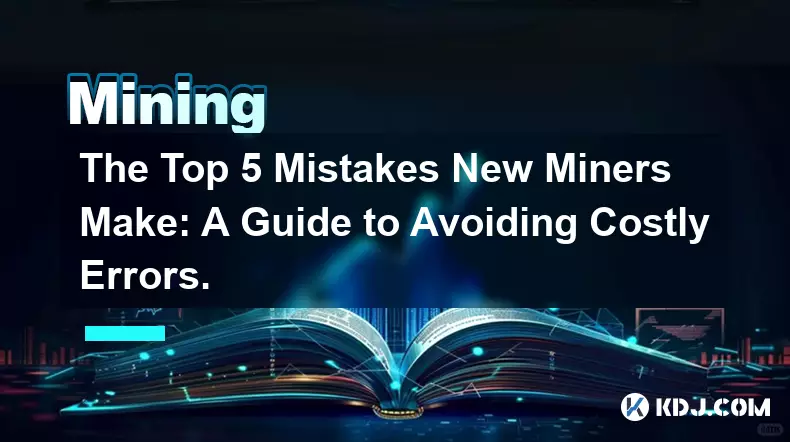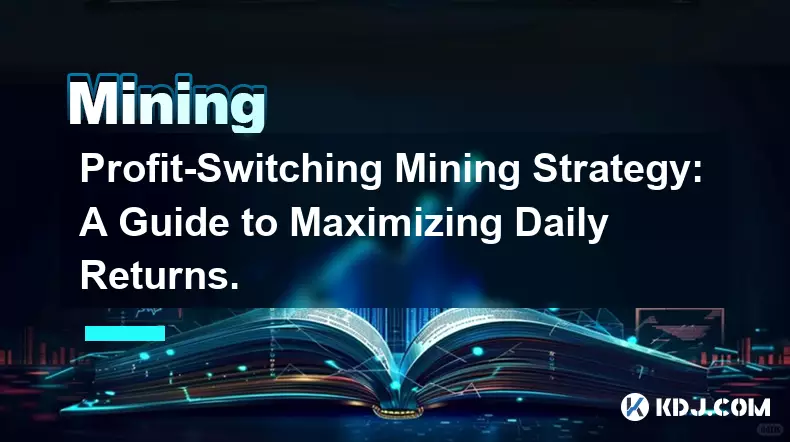-
 bitcoin
bitcoin $107015.826941 USD
-2.18% -
 ethereum
ethereum $3637.352324 USD
-5.18% -
 tether
tether $0.999831 USD
-0.02% -
 xrp
xrp $2.338078 USD
-6.23% -
 bnb
bnb $998.272150 USD
-6.97% -
 solana
solana $167.598257 USD
-10.12% -
 usd-coin
usd-coin $0.999863 USD
0.01% -
 tron
tron $0.282573 USD
-5.09% -
 dogecoin
dogecoin $0.169891 USD
-7.39% -
 cardano
cardano $0.557554 USD
-7.03% -
 hyperliquid
hyperliquid $39.914802 USD
-5.85% -
 chainlink
chainlink $15.414549 USD
-9.97% -
 bitcoin-cash
bitcoin-cash $510.361911 USD
-4.26% -
 ethena-usde
ethena-usde $0.999194 USD
-0.03% -
 stellar
stellar $0.282092 USD
-6.07%
Can you do crypto mining on a laptop?
Mining cryptocurrency on a laptop is technically possible but impractical due to poor efficiency, overheating risks, and negligible returns.
Oct 20, 2025 at 08:36 pm

Feasibility of Cryptocurrency Mining on Laptops
1. Modern laptops are not designed for sustained high-performance tasks like cryptocurrency mining. The hardware limitations, especially in thermal management and power delivery, make them inefficient compared to dedicated mining rigs. While technically possible, the return on investment is minimal due to low hash rates.
2. Most profitable cryptocurrencies require specialized equipment such as ASICs or high-end GPUs, which laptops typically lack. Integrated graphics processors found in standard laptops cannot compete with the computational throughput needed for mining Bitcoin or Ethereum effectively.
3. Running mining software continuously stresses the CPU and GPU, leading to overheating. Laptops have compact cooling systems that struggle to dissipate heat under constant load, increasing the risk of thermal throttling or permanent hardware damage.
4. Power consumption becomes a critical issue. Even if a laptop manages to mine small amounts of cryptocurrency, the electricity cost often exceeds the value of the mined coins. This makes the process economically unviable in most regions where energy prices are moderate to high.
5. Some privacy-focused or CPU-minable coins like Monero (XMR) can be mined using laptop processors. However, the earnings are negligible unless multiple devices are networked together, and even then, profitability remains questionable given wear and tear on the machine.
Risks Associated with Laptop-Based Mining
1. Prolonged mining drastically reduces the lifespan of internal components. Fans degrade faster, batteries lose capacity, and soldering joints on chips may weaken due to repeated thermal expansion and contraction.
2. Many laptop warranties explicitly void coverage if the device is used for activities deemed abusive, including cryptocurrency mining. Manufacturers recognize the strain such operations place on consumer-grade hardware.
3. Malware disguised as mining software is common. Users attempting to mine on laptops may inadvertently install cryptojacking scripts that operate silently, consuming resources without user consent and potentially compromising system security.
4. Background mining processes can interfere with normal computing tasks. System responsiveness drops, applications freeze, and overall usability suffers when the CPU or GPU is maxed out by mining algorithms.
5. Overheating can trigger automatic shutdowns, data loss, or file corruption during active use. Unlike desktops with robust airflow, laptops trap heat within confined spaces, making stable operation difficult during extended mining sessions.
Alternative Approaches for Entry-Level Miners
1. Cloud mining services allow users to rent hashing power from remote data centers. While this avoids hardware risks, it introduces dependency on third-party operators who may lack transparency or engage in fraudulent practices.
2. Joining mining pools with shared resources enables participation without owning high-cost equipment. Still, rewards are distributed based on contribution, so laptop-level input yields almost no payout after fees.
3. Using older or decommissioned laptops solely for experimental mining helps understand the mechanics without risking primary devices. These machines can run lightweight algorithms to gain practical insight into blockchain validation processes.
4. Some decentralized networks support proof-of-stake or hybrid models that don’t rely on raw computation. Participating through staking wallets or node hosting offers an alternative path to earning crypto without intensive hardware demands.
5. Educational platforms simulate mining environments to teach consensus mechanisms and cryptographic principles. These tools provide hands-on experience without requiring actual resource expenditure or hardware degradation.
Frequently Asked Questions
Can I mine Bitcoin on my laptop safely?It is technically possible but highly discouraged. The time required to mine even a fraction of a Bitcoin using a laptop would take years, if not decades, while causing significant hardware wear.
What happens if my laptop overheats during mining?Sustained overheating leads to thermal throttling, reduced performance, and potential failure of the processor or graphics unit. In extreme cases, battery swelling or circuit damage may occur.
Are there any cryptocurrencies designed for CPU mining?Yes, Monero (XMR) is one example that supports CPU-based mining and resists ASIC dominance. However, profitability on a laptop remains extremely low due to limited processing power.
Does mining drain the laptop battery quickly?Mining at full capacity consumes power rapidly. Even when plugged in, the charging circuit may not keep up with the draw, leading to gradual discharge and increased stress on the battery over time.
Disclaimer:info@kdj.com
The information provided is not trading advice. kdj.com does not assume any responsibility for any investments made based on the information provided in this article. Cryptocurrencies are highly volatile and it is highly recommended that you invest with caution after thorough research!
If you believe that the content used on this website infringes your copyright, please contact us immediately (info@kdj.com) and we will delete it promptly.
- Milk Mocha's $HUGS: The Presale Meme Coin Redefining Community and Value
- 2025-11-04 17:50:02
- Dogecoin, Lyno AI, and Growth Potential: A New Era for Crypto?
- 2025-11-04 17:45:01
- DASH Price Surges Amid Aster Listing: Market Confidence Returns?
- 2025-11-04 17:45:14
- Crypto Price Predictions: DeFi Coins to Watch in 2026 – Will MUTM Outshine XRP?
- 2025-11-04 17:50:01
- Rare Coin Mania: The Red Coin Collectors Rush!
- 2025-11-04 17:55:02
- Shiba Inu, Blue Kachina, and a Message: What's the Buzz?
- 2025-11-04 17:55:02
Related knowledge

Mining Hardware Longevity Guide: Essential Tips to Make Your GPUs Last.
Nov 01,2025 at 04:00pm
Mining Hardware Longevity Guide: Essential Tips to Make Your GPUs LastAs cryptocurrency mining continues to attract both hobbyists and professionals, ...

The Top 5 Mistakes New Miners Make: A Guide to Avoiding Costly Errors.
Nov 01,2025 at 10:18am
The Top 5 Mistakes New Miners Make: A Guide to Avoiding Costly Errors Entering the world of cryptocurrency mining can be both exciting and overwhelmin...

The Miner's Guide to Market Cycles: When to Hold and When to Sell.
Nov 03,2025 at 07:55pm
The Miner's Guide to Market Cycles: When to Hold and When to Sell Bitcoin mining has evolved from a hobbyist pursuit into a highly competitive, capita...

Profit-Switching Mining Strategy: A Guide to Maximizing Daily Returns.
Nov 03,2025 at 11:55am
Understanding Profit-Switching in Cryptocurrency Mining1. Profit-switching is a dynamic mining strategy that automatically redirects computational pow...

Setting Up Mining Alerts: A Guide to Monitoring Your Rigs 24/7.
Nov 03,2025 at 02:54pm
Why Continuous Monitoring Is Crucial in Cryptocurrency Mining1. Cryptocurrency mining operations rely heavily on hardware stability and network connec...

Understanding Pool Luck and Variance: An Essential Guide for Miners.
Nov 03,2025 at 10:01pm
What Is Pool Luck in Cryptocurrency Mining?1. Pool luck refers to the statistical measure of how frequently a mining pool finds blocks compared to the...

Mining Hardware Longevity Guide: Essential Tips to Make Your GPUs Last.
Nov 01,2025 at 04:00pm
Mining Hardware Longevity Guide: Essential Tips to Make Your GPUs LastAs cryptocurrency mining continues to attract both hobbyists and professionals, ...

The Top 5 Mistakes New Miners Make: A Guide to Avoiding Costly Errors.
Nov 01,2025 at 10:18am
The Top 5 Mistakes New Miners Make: A Guide to Avoiding Costly Errors Entering the world of cryptocurrency mining can be both exciting and overwhelmin...

The Miner's Guide to Market Cycles: When to Hold and When to Sell.
Nov 03,2025 at 07:55pm
The Miner's Guide to Market Cycles: When to Hold and When to Sell Bitcoin mining has evolved from a hobbyist pursuit into a highly competitive, capita...

Profit-Switching Mining Strategy: A Guide to Maximizing Daily Returns.
Nov 03,2025 at 11:55am
Understanding Profit-Switching in Cryptocurrency Mining1. Profit-switching is a dynamic mining strategy that automatically redirects computational pow...

Setting Up Mining Alerts: A Guide to Monitoring Your Rigs 24/7.
Nov 03,2025 at 02:54pm
Why Continuous Monitoring Is Crucial in Cryptocurrency Mining1. Cryptocurrency mining operations rely heavily on hardware stability and network connec...

Understanding Pool Luck and Variance: An Essential Guide for Miners.
Nov 03,2025 at 10:01pm
What Is Pool Luck in Cryptocurrency Mining?1. Pool luck refers to the statistical measure of how frequently a mining pool finds blocks compared to the...
See all articles










































































